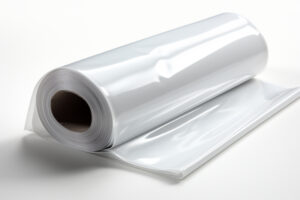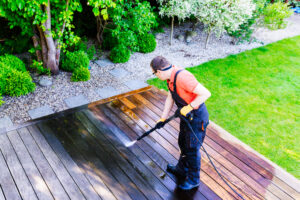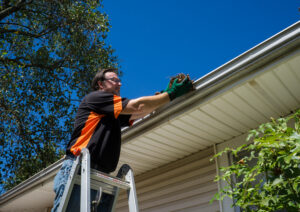I still remember the look on my neighbor Mark’s face last April when he saw the difference between our homes.
We’d both endured the same Monmouth County winter—the relentless nor’easters, the mid-January ice storm that left Howell without power for three days, and that bizarre late-February sleet that seemed to hit our neighborhood harder than anywhere else in town.
But while his colonial still wore winter’s grimy residue like a stubborn memory, my modest Cape Cod gleamed in the spring sunshine.
“What did you do?” he asked, coffee mug in hand, squinting at my house with a mixture of admiration and competitive neighborhood envy.

Does Your House Need To Be Power Washed?
“Power washed last weekend,” I replied, trying not to sound too satisfied. “First decent weekend after the pollen settled.”
That conversation launched what’s become something of a springtime tradition in our little corner of Howell—the annual power washing weekend that transforms our street from winter-beaten to spring-ready in a satisfying burst of pressurized restoration.
The Howell Homeowner’s Power Washing Timeline
Living in Howell means navigating a specific seasonal cleaning window that residents of neighboring towns might not appreciate. Our positioning between the Pine Barrens and the agricultural areas of western Monmouth creates distinct challenges that demand their own timing.
The Yellow Dust Dilemma
“I made the mistake of power washing too early exactly once,” shares Diane, whose Candlewood home has stood through twenty-three Howell springs. “It looked perfect for exactly four days, and then the pine pollen hit. It was like I’d never cleaned it at all.”
This distinctive yellow-green coating that blankets Howell each spring—covering cars, patio furniture, and every horizontal surface—represents the first hurdle in effective exterior cleaning. Longtime residents have learned to track the pine pollen cycle with almost meteorological precision. The sweet spot typically falls around the second weekend in May, when the massive pine pollen release has subsided but before summer’s heat activates the more stubborn algae growth on north-facing surfaces.
Karen from Freewood Acres developed what she calls the “windshield wiper test”—when she can go three days without needing to clean her car windshield, the pollen season has sufficiently passed for power washing to be worthwhile.
The Microclimate Consideration
What makes Howell particularly tricky for exterior cleaning is our township’s varied microclimates. Homes near Manasquan Reservoir face different moisture patterns than properties along the Metedeconk watershed or those tucked into the wooded areas near Turkey Swamp.
“My sister and I both power wash our homes the same weekend every year,” explains James, who’s lived in Howell for over a decade. “She’s near Southard Road and I’m closer to Aldrich. Her north-facing walls always need more attention than mine do, but my driveway is significantly worse. We’re just a few miles apart, but the cleaning needs are completely different.”
This variation stems from Howell’s undulating topography and diverse ecosystems. Properties in low-lying areas battle different contaminants than those on higher ground, creating cleaning challenges as individualized as our property tax assessments.
Beyond Aesthetics: The Hidden Value of Pressurized Renewal
When Mike first moved to Ramtown from Pennsylvania, he couldn’t understand his neighbors’ almost religious devotion to spring power washing. “It seemed purely cosmetic to me,” he admits. “Until I skipped a year.”
That missed season taught him what established Howell residents already knew—our region’s specific combination of atmospheric conditions creates a particularly destructive environment for exterior surfaces when left untreated.
The “Howell Pattern” on Exterior Surfaces
Local contractors have a name for the distinctive deterioration pattern they find on neglected Howell properties—a combination of black streaking on north-facing surfaces, greenish growth along water runoff paths, and a stubborn gray film that develops where morning dew lingers longest. This “Howell Pattern” represents the perfect storm of our region’s humidity, temperature fluctuations, and biological elements.
“You can literally see where the property lines are between homes that are regularly power washed and those that aren’t,” observes Linda, who’s been selling real estate in Howell for fifteen years. “It’s not just about curb appeal—we can actually document faster deterioration of exterior materials when annual cleaning is neglected.”
The financial math becomes compelling when you consider the replacement costs. A comprehensive power washing service generally runs between $250-400 for an average Howell home, while premature siding replacement can easily exceed $15,000. Regular cleaning extends siding lifespan by an estimated 50-75% in our specific climate.
The Unexpected Health Connection
When the Jacobsens’ youngest developed respiratory issues, their allergist asked a surprising question: “When was the last time you power washed your home?”
The connection between exterior home cleanliness and family health isn’t immediately obvious, but allergists serving Monmouth County have noticed the pattern. Our region’s mold spores, pollen accumulation, and airborne particulates create a reservoir of allergens that collect on exterior surfaces. These contaminants don’t just stay outside—they make their way indoors through open windows, HVAC systems, and on clothing.
“We power wash every April now,” Sarah Jacobsen shares. “It’s part of our son’s allergy management plan, as important as changing air filters.”
Finding Your Power Washing Path: DIY or Professional?
The hardware stores along Route 9 display pressure washers prominently each spring, tempting Howell homeowners with the promise of affordable DIY renewal. But the choice between renting equipment and hiring professionals isn’t as straightforward as it might seem.
The Hidden Complexities of Howell Homes
“I thought it would be simple,” laughs Robert, whose Oak Glen home features the mixed materials so common in our community—vinyl siding, brick accents, sandstone details, and composite decking. “Then I realized each surface needed different pressure levels, different cleaning solutions, and different techniques. My afternoon project turned into a weekend odyssey.”
This material diversity represents a particular challenge for Howell power washing. The development booms of the 1990s and early 2000s introduced homes with multiple exterior finishes, each responding differently to pressurized cleaning. The sandstone accents popular in developments like Equestra require gentler approaches than the vinyl siding, while the authentic cedar shake details found on many Northwoods homes demand specialized care to prevent damage.
When Joseph tackled his first DIY power washing, he discovered another Howell-specific challenge: our water. “Our well water has high iron content,” he explains. “I ended up with rust streaks everywhere before I realized I needed to use specific additives to neutralize the minerals.”
The professional advantage becomes clear when considering these local nuances. Established Howell power washing services have evolved techniques specifically calibrated to our community’s homes, water chemistry, and typical contaminants.
Whether you choose the satisfying DIY approach or opt for professional expertise, spring power washing represents one of the most transformative investments for Howell homeowners. Beyond the immediate visual gratification lies the deeper value of preserved materials, healthier living spaces, and the quiet neighborhood pride that comes from seeing your home restored to its intended beauty—ready to face another year in our challenging but rewarding Monmouth County climate.




